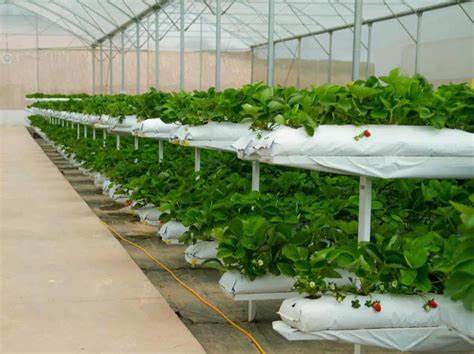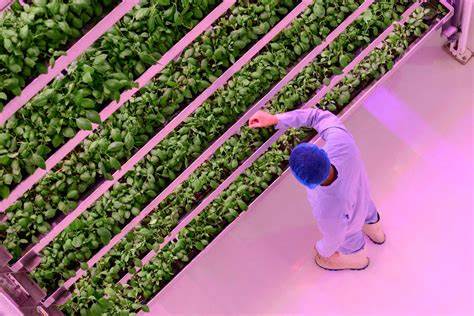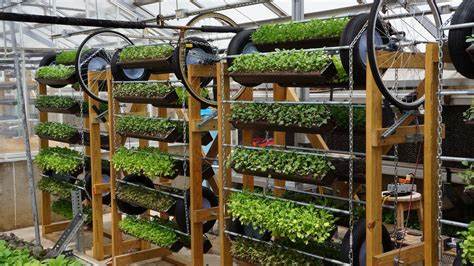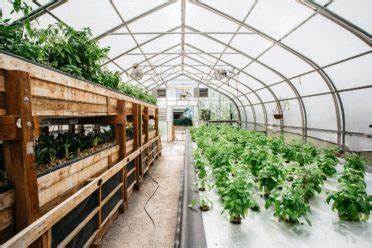
Maintaining Vertical Farm Systems: A Path to Sustainable Agriculture
Introduction
Vertical farming has gained significant attention in recent years as an innovative and sustainable approach to agriculture. This article provides a comprehensive overview of vertical farm systems, exploring their historical background, key concepts, main discussion points, case studies, current trends, challenges, and future outlook. By delving into the intricacies of vertical farming, we aim to emphasize its importance and potential in achieving sustainable food production.
Historical Background
The concept of vertical farming can be traced back to the Hanging Gardens of Babylon, one of the Seven Wonders of the Ancient World. However, it wasn’t until the late 20th century that vertical farming gained momentum as a potential solution to urban food production challenges. With rapid urbanization and limited arable land, scientists and innovators began exploring ways to grow crops vertically. Technological advancements and increased awareness of sustainability issues have fueled the evolution of vertical farming.
Key Concepts and Definitions
Vertical farming refers to the cultivation of crops in vertically stacked layers, utilizing artificial lighting, climate control, and efficient use of space to optimize yields. The key components of a vertical farm system include vertical grow racks, hydroponic or aeroponic systems, LED lighting, environmental controls, and sensors for monitoring plant health. This approach offers numerous benefits, including year-round production, reduced need for pesticides, and minimal water usage compared to traditional farming methods.
Main Discussion Points
Designing an efficient vertical farming system is crucial for maximizing productivity. The proper layout and spacing of plants ensure adequate light exposure and efficient use of space. Integrating technology, such as automated irrigation systems and smart sensors, enables optimal resource utilization and minimizes waste. Additionally, considering lighting, irrigation, and ventilation systems is key to maintaining ideal growing conditions for plants.

To ensure optimal plant health in a vertical farming system, nutrient management and fertilization play a vital role. Precise monitoring of nutrient levels and pH balance is necessary for crop growth and development. Moreover, addressing pest and disease issues promptly is crucial to prevent the spread of infestations and maintain healthy plants. Implementing strategies such as pruning, trellising, and using biocontrols can effectively manage plant growth and optimize yield.
Sustainability and resource efficiency are essential aspects of vertical farming systems. Utilizing renewable energy sources, such as solar panels and wind turbines, reduces the environmental impact of energy consumption. Water conservation practices, like recirculating irrigation systems and rainwater harvesting, minimize water wastage. Additionally, implementing waste management and recycling techniques within vertical farms ensures the responsible disposal of organic and non-organic waste materials.
Case Studies or Examples
One successful vertical farm system is located in Singapore. This farm utilizes a multi-story vertical structure equipped with hydroponic systems and LED lighting to grow various leafy greens and herbs. The farm’s efficient design allows for high yield production in a limited space, contributing to the local food supply and reducing dependence on imports. However, challenges such as high initial investments, energy costs, and maintaining crop quality remain areas of focus for the farm.
In the pharmaceutical industry, vertical farming is being used to cultivate medicinal plants. By providing controlled growing conditions, this application ensures a consistent supply of high-quality medicinal herbs. The benefits include reduced reliance on imported medicinal plants, increased product consistency, and shortened production cycles. With the potential for scalability and wider adoption, this innovative use of vertical farming can revolutionize the pharmaceutical industry.
Current Trends or Developments
Recent advancements in vertical farming technology have led to significant improvements in efficiency and productivity. The use of AI and machine learning algorithms allows for precise monitoring and control of environmental parameters, resulting in optimized crop growth. Additionally, advancements in LED lighting technology have increased energy efficiency and the ability to tailor light spectra for specific plant requirements. These developments continue to enhance the feasibility and scalability of vertical farming.

Research findings on the efficiency and productivity of vertical farming systems have been promising. Studies have shown that vertical farms can achieve higher yields per unit area compared to traditional agriculture. Additionally, vertical farming’s controlled environment reduces the need for pesticides and herbicides, leading to healthier and safer produce. These research findings support the potential of vertical farming to address food security challenges and contribute to sustainable agriculture.
Challenges or Controversies
Despite its many benefits, vertical farming faces environmental concerns. The high energy requirements for artificial lighting and climate control systems can have a significant carbon footprint. However, with the shift towards renewable energy sources, such as solar and wind, vertical farming can mitigate its environmental impact. Additionally, the economic feasibility and scalability of vertical farming systems remain a challenge, with the initial setup costs often being high. However, ongoing advancements in technology and economies of scale are gradually reducing these barriers.
Critiques of vertical farming include concerns about its potential limitations. Critics argue that the high initial investments and operating costs may limit its widespread adoption, particularly in developing countries with limited resources. Furthermore, the lack of crop diversity in vertical farming systems is seen as a potential drawback. However, ongoing research and development in vertical farming techniques aim to address these limitations and make it a more viable and sustainable solution.

Future Outlook
The potential for expansion and integration of vertical farming into urban areas is significant. As urban populations continue to grow, the need for locally produced, fresh food becomes increasingly important. Vertical farming’s ability to utilize unused urban spaces and reduce transportation distances positions it as an ideal solution for urban food production. Advances in technology and automation will further optimize vertical farming systems, enabling cost-effective and efficient crop production.
The implications of vertical farming for food security and sustainability are immense. By reducing the reliance on traditional agricultural practices, which often deplete soil nutrients and contribute to deforestation, vertical farming promotes sustainable food production. The controlled environment and reduced need for pesticides result in safer and healthier produce. Vertical farming has the potential to revolutionize the agricultural industry, ensuring a sustainable and secure food supply for future generations.
Conclusion
In conclusion, maintaining vertical farm systems is crucial for achieving sustainable agriculture and addressing the challenges of urban food production. Through proper design, plant health management, and resource efficiency, vertical farming offers a viable solution for maximizing crop yields while minimizing environmental impact. Case studies and research findings highlight the potential of vertical farming in various industries and its positive contributions to food security. Despite challenges and critiques, ongoing advancements and future developments point towards a promising future for vertical farming. Embracing this innovative approach to farming can lead us towards a more sustainable and resilient food system.




